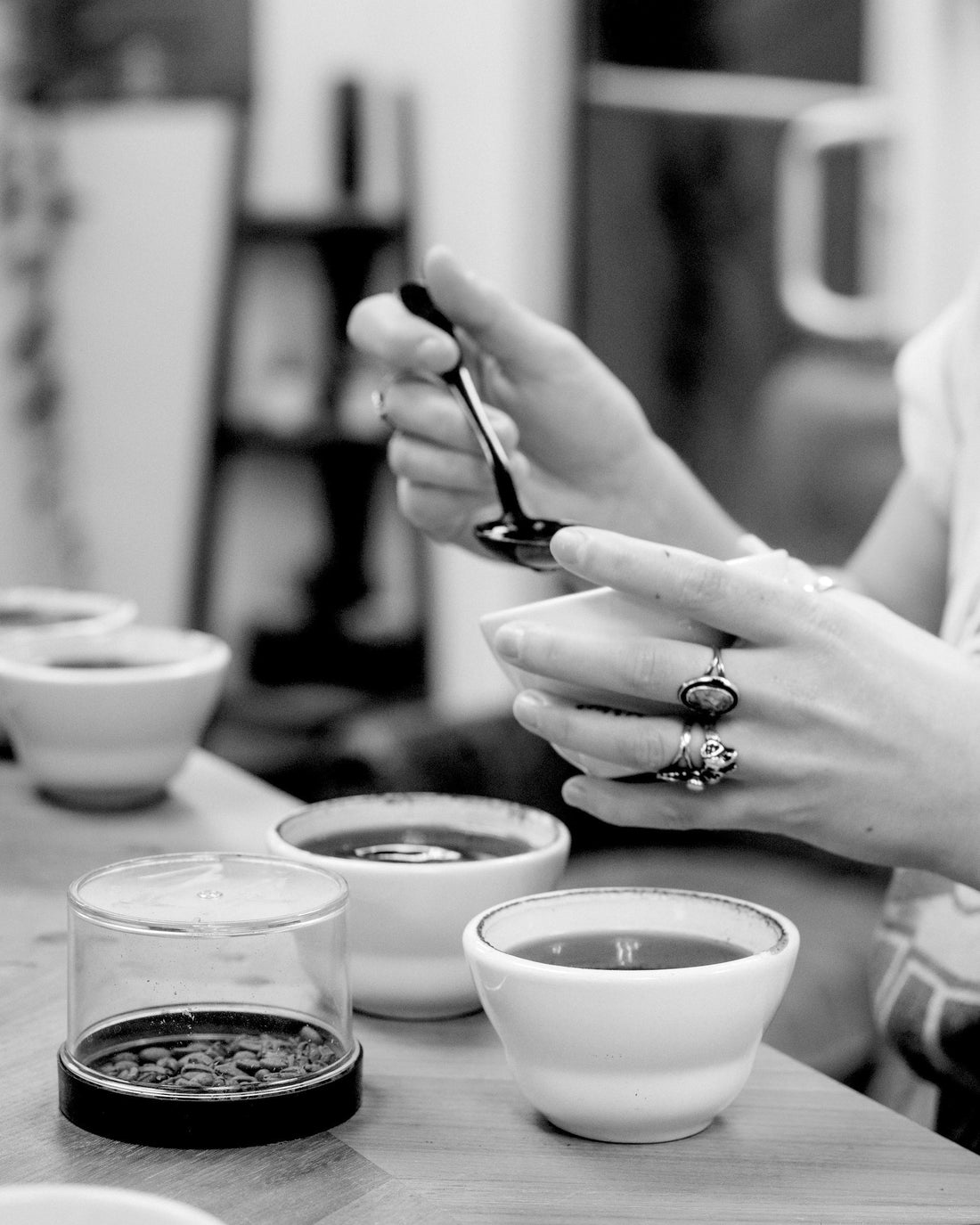Understanding Coffee Cupping Scores: What the Numbers Actually Represent
Cupping is the industry-standard method for evaluating the quality of coffee. This structured approach allows professionals across the supply chain—from producers and importers to roasters and QC teams—to assess the sensory attributes of a coffee in a controlled environment. At Bold Bean, cupping plays a central role in green coffee purchasing decisions, roast profiling, sensory calibration, flavor communication, and quality control.
If you're here, you're likely interested in what cupping scores actually signify. Let’s explore the mechanics of coffee scoring and how to interpret those numbers in context.
What Is a Cupping Score?
In specialty coffee, cupping scores are not analogous to academic grading (e.g., an 87 is not a B+). Rather, the system, standardized by the Specialty Coffee Association (SCA), assigns scores based on a 100-point scale, with each point representing a measurable improvement in cup quality. Importantly, this scale is non-linear: moving from 82 to 83 is far easier than moving from 87 to 88.
There is no such thing as a true 100-point coffee. Even the most exceptional coffees, including award-winning Geshas and experimental nano-lots, rarely exceed 90–92 points. In fact, 90+ scores are exceedingly rare and reserved for coffees with exceptional clarity, complexity, balance, and distinctiveness.
By contrast, some commercial review platforms (we won't name names) often publish inflated scores (frequently 95+) that are not calibrated to SCA methodology and, in some cases, are tied to paid promotional content. While these scores may be meaningful within those platforms, they are not reflective of industry-wide standards and should not be compared directly to SCA scores.
Scoring Thresholds
Here’s how we interpret SCA scores at Bold Bean, with reference to industry norms:
-
<80 Points: Considered non-specialty. These coffees typically exhibit primary defects (e.g., phenolic, ferment, moldy), lack sweetness and structure, and may display negative attributes like astringency, harshness, or mustiness.
-
80–82 Points: Entry-level specialty. Clean cup with no major defects. Generally simple, with muted acidity, limited sweetness, and a narrow flavor spectrum. Often characterized by base notes like nuts, cocoa, or cereal grains.
-
83–85 Points: Solid specialty range. Sweetness and balance improve; body and aftertaste are more developed. Acidity becomes more integrated and pleasant. Flavor profiles begin to show distinctiveness and better structure. Coffees in this range are highly drinkable and versatile—what we would consider strong daily drivers. These are solid blenders.
-
86–87 Points: Higher-end specialty. These coffees display increased clarity, complexity, and sweetness. Acidity is elevated and well-integrated. Flavor descriptors often include fresh fruits, florals, and spice. Finish is clean and persistent. These coffees tend to appeal to coffee fanatics and those looking for excellent cup quality and a unique drinking experience. These types of coffees form the core of our single origin program.
-
88–89 Points: Exceptional. Clear varietal and/or terroir expression, highly articulate flavor structure, and often surprising or dynamic cup character. These coffees command attention on the table and demonstrate true skill at origin and in roasting. At this level, we tend to fast-track samples into purchasing conversations.
-
90+ Points: Extremely rare and reserved for coffees with extraordinary complexity, multidimensional balance, and a completely clean cup. These coffees are typically produced in small volumes using boutique cultivars and super meticulous processing techniques. Coffees in this range often win Cup of Excellence competitions or set auction records.
As a reference point: the 2023 Best of Panama champion—a Gesha variety—scored 96.5 points and sold for over $10,000/kg green.
The Bold Bean Approach to Scoring
Our internal calibration is tightly aligned with SCA protocols. We cup on a 100-point scale using the SCA cupping form, applying weighted evaluation across the following attributes: fragrance/aroma, flavor, aftertaste, acidity, body, balance, uniformity, clean cup, sweetness, and overall.
-
Blends: Minimum internal standard is 83 points, with typical scores falling in the 84–85 range. We’re looking for balance, consistency, approachability, cleanliness, sweetness and clarity. These coffees should perform well across multiple brew methods and appeal to a broad customer base.
-
Single Origins: Baseline is 86 points, with most lots scoring 87–88. These coffees are selected for complexity, transparency of flavor, and structure. We look for clean brightness, distinct flavor notes, and a cup experience that justifies a higher price point.
When a coffee scores 88+ in our lab, it’s considered an outlier. We’ll pull the team in for additional tasting and typically move quickly to secure the lot.
Final Thoughts
Scoring coffee is as much a calibration exercise as it is an assessment. The numbers are helpful, but the real value lies in the conversation they spark: what’s in the cup, how it got there, and who made it possible. Every incremental increase in score—especially past 85—represents exponential increases in labor, precision, and intentionality from farm to roastery.
So, the next time you see a coffee scored at 87 points, know that it’s not a B+. It’s the result of excellence across every step of the supply chain.
Curious to learn more?
We host monthly Public Cupping Events designed for both enthusiasts and professionals. These sessions are a great way to develop your palate, learn scoring methodology, and understand what separates an 84 from an 88 on the table.
